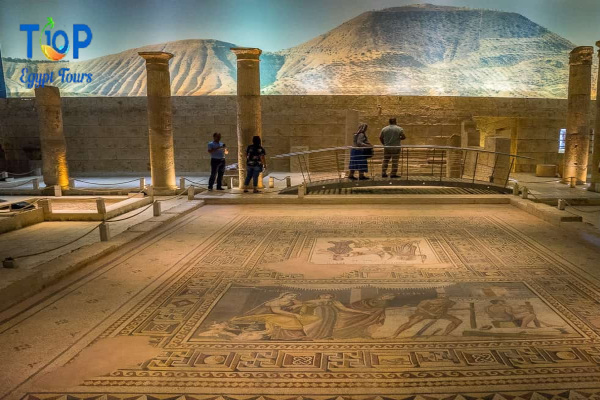Mosaic Museum of the Greek Community, Nestled within the bustling tapestry of Cairo lies a hidden gem that whispers tales of ancient splendor and cultural marvels – The Mosaic Museum of the Greek Community. In this edition of our exploration into Cairo’s Hidden Gems, we invite you to uncover the timeless beauty and quirky uniqueness that defines this captivating museum. Prepare to be enchanted by the majesty of Hellenistic artistry that transcends time.
The museum is located in the historic neighborhood of Darb El-Ahmar, which was once a thriving Greek community in Cairo. The building itself is a masterpiece, with intricate mosaics adorning its facade and interior. The museum’s collection spans over 1,000 years and includes some of the most stunning examples of Islamic mosaic art in the world.
Mosaic Museum of the Greek Community : Journey into Hellenistic Grandeur:
As you step through the doors of the Mosaic Museum, you embark on a journey through the rich tapestry of Hellenistic heritage. The museum’s corridors unfold stories of gods, mythological beings, and daily life intricately depicted in the form of meticulously preserved mosaics. Each step echoes with the footsteps of ancient civilizations, inviting you to immerse yourself in the grandeur of a bygone era.
Quirky Artistry and Unique Narratives:
The museum’s collection boasts an array of mosaics that transcend the ordinary, offering a glimpse into the quirky and unique perspectives of ancient artists. From whimsical mythological scenes to everyday moments frozen in time, each mosaic tells a distinctive story. Discover the artistry behind the intricate patterns and vibrant colors that make these mosaics not just artifacts but portals to another world.
The museum’s collection is divided into several sections, each showcasing a different aspect of Islamic mosaic art.
The first section features mosaics from the Umayyad period (661-750 CE), which are characterized by their intricate geometric patterns and vibrant colors. These mosaics were typically used to decorate mosques, palaces, and other public buildings during this time.
The second section features mosaics from the Abbasid period (750-1258 CE), which are characterized by their more figurative designs. These mosaics often depict scenes from daily life, such as hunting scenes or scenes from the Quran.
The third section features mosaics from the Mamluk period (1258-1517 CE), which are characterized by their intricate floral and vegetal patterns. These mosaics were typically used to decorate tombs and other private spaces during this time.
The Mosaic Museum of the Greek Community stands as a testament to the enduring beauty of cultural exchange. Top Ten Egypt Tours invites you to uncover the hidden gem that is this museum, where timeless elegance meets quirky uniqueness. Join us on a journey through art, history, and cultural richness, and let the mosaic-adorned halls of this Cairo gem transport you to an era of majestic splendor that continues to captivate the hearts of those who venture within.



Comment (0)